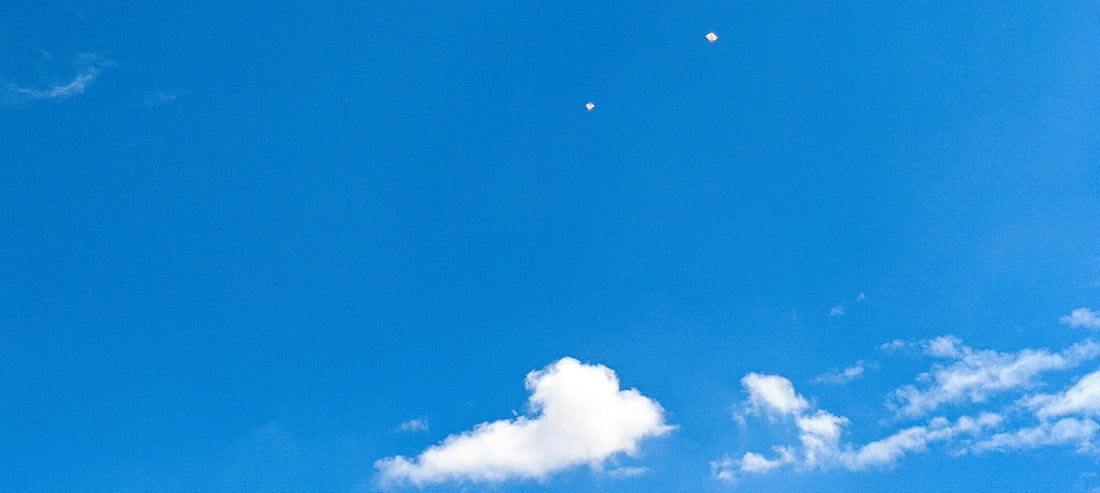The combination of AI technology and space exploration at a time when weather balloons get mistaken for flying saucers and billionaires launch rockets makes it inevitable for scientists to study the skies.
What is the Galileo Project ?
Harvard astrophysicist Avi Loeb established the Galileo Project to study the skies. Its mission? The project aims to track down, identify, and analyze every object floating in the Earth's atmosphere to verify if there are any non-terrestrial objects present.
No wild theories. No blurry UFO videos from the 90s. Just data, sensors, and some serious computational firepower.
The Big Idea: See Everything, Miss Nothing
The Galileo Project operates with a straightforward fundamental concept which is:
What if we catalogued everything in the sky?
Planes, birds, drones, meteors, and anything else that moves. Everything that remains unexplained becomes highly significant once you have identified all the known objects.
The search for extraterrestrial life is not the main focus here. The main purpose is to develop a complete understanding of ordinary objects which allows us to detect anything unusual.
Professor Loeb emphasizes that science tools will help us achieve the goal of bringing clarity to the fog.
How It Works: AI-Powered Skywatching
To achieve this goal the team developed the Observatory Class Integrated Computing Platform (OCICP). The surveillance system serves as a multi-sensor monitoring device that operates continuously through day and night to track the sky using:
- High-resolution optical and infrared cameras
- Passive radar (so it can detect without alerting)
- Audio sensors for picking up sonic signatures
- And most importantly: a real-time AI classification engine
The AI system performs data collection while analyzing data and learning with time to enhance its object identification capabilities. The system functions like a Shazam application which identifies objects in the sky by distinguishing between drones and weather balloons, and unexplained phenomena.

(Illustration by authors of the study: Abraham (Avi) Loeb and Frank H. Laukien (possibly also other Galileo Project members)
Who’s Behind It
The project operates under the leadership of Avi Loeb while bringing together astrophysicists with engineers, software developers, and military-grade hardware experts. Some of the minds involved include:
- Gaspar Bakos (exoplanet hunter)
- Maya Burhanpurkar (AI systems engineer)
- Dr. Phillip Brigham (data science)
The website of The Galileo Project lists all team members who work alongside astrophysicists, engineers, software developers, and military-grade hardware experts.
This team operates differently from secret government agencies because they endorse open data alongside transparent research while rejecting black vaults and classified briefings.
What Have They Found So Far?
- Over 500,000 object trajectories tracked
- The researchers have identified approximately 16% of the recorded data which shows irregular movements that cannot be explained by standard analysis.
- Multiple peer-reviewed studies and published methodologies, all freely available
And this is just the beginning. The team plans to establish additional observation stations throughout the world to build a global network of intelligent skywatchers who will contribute their data to one unified intelligence system.
Governments Are Watching Too... Quietly
The Galileo Project conducts its operations in full transparency while multiple government organizations maintain classified programs in the background:
- Since 2022 the All-domain Anomaly Resolution Office (AARO) within the United States has dedicated itself to studying Unidentified Aerial Phenomena (UAP). They have not made any significant revelations in their investigations.
- NASA's UAP study team published their 2023 report to promote better data collection while refraining from making any statements about extraterrestrial life.
- The Project Condign initiative in the UK spent years documenting thousands of observations but eventually discarded all recorded files.
The governments conduct research activities but their information-sharing practices remain limited. Galileo's decision to publish first and receive peer review brought a new wave of transparency (stratospheric) to the field.
Glarnok & Moozart React: "Classify This"
Glarnok (alien, former government contractor):
The sky cataloging strategy is a familiar Earth-based approach. Classic Earth tactic. The pyramids have been our target since ancient times for radar spoofing. You can try using your AI system if you want to.
Moozart:
The researchers incorrectly identified me as an aerial object (a weather balloon), during their investigation. Long story. My position remains the same as Avi since labeling known phenomena leaves the unknown to be discovered.
Glarnok:
Honestly, I respect it. The combination of transparency along with rigorous methods and open-source approach makes this project almost endearing. They will soon discover the cloaked sky barn. Moozart knows what I’m talking about.
Moozart:
Nods solemnly. Too much hay. Not enough answers.
Want to Bring the Search Indoors?
Our obsession with unexplained phenomena should start with objects that are closer to us such as objects found on your bedside table.
Meet The Alien Abduction Lamp:

The Alien Abduction Lamp shines as a tribute to UAPs together with misidentifications and the general curiosity about what exists outside. It's art. It's light. It's possibly a signal.
Glarnok should stay away from the dimmer switch operation.

